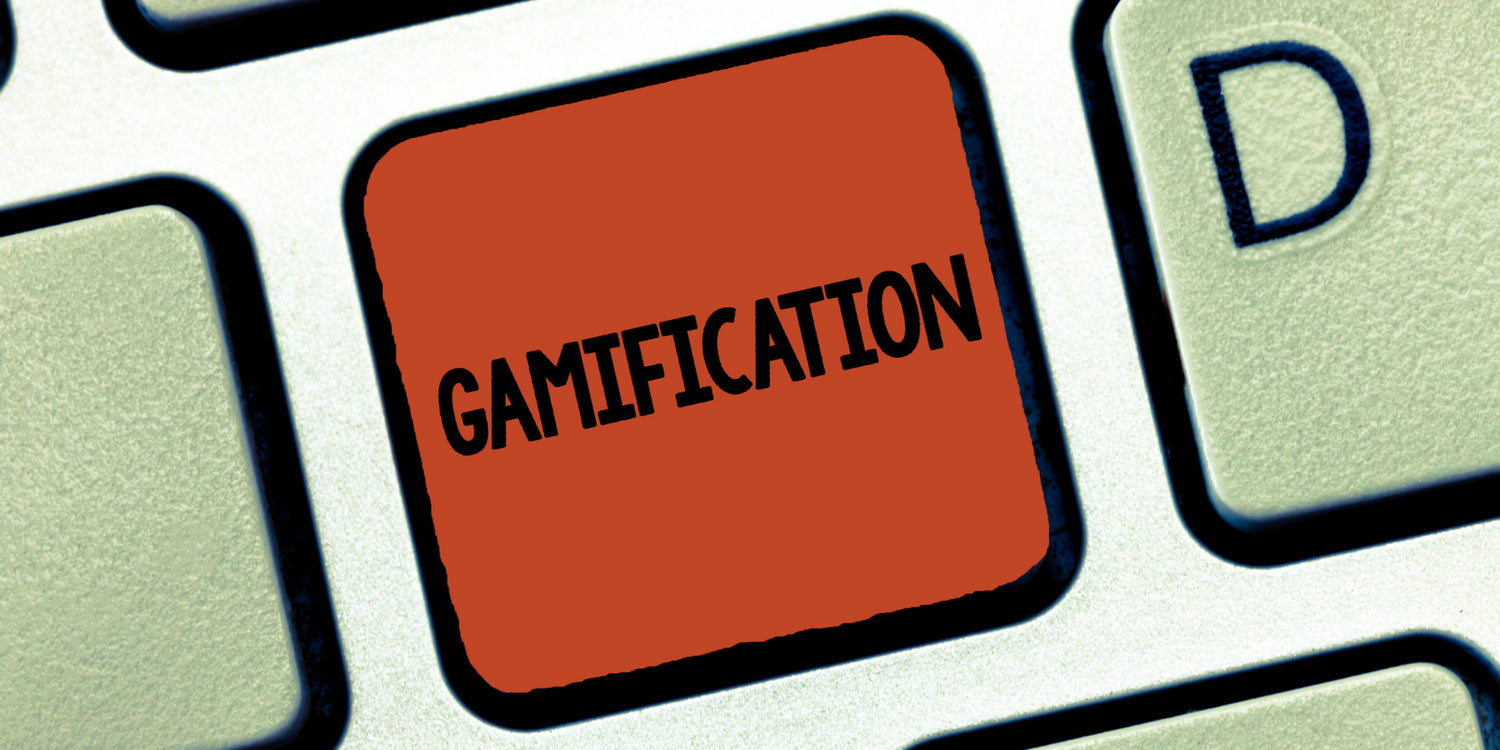In the pursuit of achieving our fitness goals, motivation often plays a crucial role. It's that driving force that pushes us to lace up our sneakers, hit the gym, or conquer that challenging workout routine. However, even the most dedicated fitness enthusiasts can find themselves in need of an extra boost from time to time. That's where gamification steps in, offering a refreshing and innovative approach to keeping our motivation levels high.
The world of gamification offers a new and exciting way of getting the motivation you need to keep going. So, let’s explore how it can revolutionize your fitness motivation. From turning mundane workouts into exciting challenges to fostering a sense of accomplishment and community, gamification has the power to level up your fitness motivation like never before.
Are you prepared to embrace the gamified approach to fitness? Let's embark on this journey together and discover the extraordinary possibilities that lie ahead.
What Is Gamification?

Gamification is a fascinating concept that has gained significant attention in recent years. By integrating game elements in non-game contexts, gamification aims to motivate and engage individuals in various activities. It harnesses the power of intrinsic human desires such as accomplishment, competition, and socialization, to increase user participation, loyalty, and productivity. Through the application of game mechanics, such as points, badges, challenges, and leaderboards, gamification taps into our natural affinity for gaming and rewards, transforming mundane tasks into enjoyable experiences. It has proven to be a powerful tool for businesses, education, and personal development, revolutionizing how we approach tasks, learn, and interact. With the potential to enhance motivation, captivate audiences, and drive behavior change, gamification has become a widely utilized strategy to unlock human potential and achieve desired outcomes across various domains.
What Makes Gamification a Game-Changer for Fitness Motivation?
Gamification has revolutionized the way we approach fitness motivation by incorporating game elements that tap into our basic human needs for achievement, social interaction, and self-expression. Key aspects of gamification include points, badges, and leaderboards, which have proven to be powerful motivators.
Points provide a tangible representation of progress and accomplishment, giving individuals a sense of achievement and satisfaction. As users accumulate points for completing workouts or reaching fitness milestones, they are driven to continue pushing themselves further. Badges, on the other hand, offer a form of social recognition. They allow individuals to showcase their accomplishments and bring a sense of competition and camaraderie among fellow users. Leaderboards take this social interaction a step further by creating a friendly rivalry between users, as well as encouraging individuals to challenge themselves and strive for the top spot.
Several fitness classes and gyms have embraced gamification techniques. For example, many cycling studios use leaderboards to display real-time rankings during classes. This not only adds an element of competition but also motivates participants to push harder and reach their full potential. Additionally, fitness apps like Strava and Fitbit offer reward points for completing challenges or achieving personal bests, which can be redeemed for exclusive discounts or merchandise. These game-like features enhance motivation and create a sense of accomplishment beyond the physical benefits of exercise.
In recent years, the concept of working out for a cause has gained traction, further leveraging the power of gamification. Fitness events and fundraisers allow individuals or groups to set goals and receive prizes for reaching fundraising targets. By combining fitness with a greater purpose, participants are motivated to push themselves harder while making a positive impact on society.
How Does Fitness Gamification Work?
Fitness gamification is a concept that combines elements of gamification with fitness activities to make exercising more enjoyable and engaging. The key elements and strategies involved in gamifying fitness include points, levels, challenges, and rewards.
In fitness gamification, users can earn points by completing various activities such as logging workouts, achieving personal fitness goals, or participating in challenges. As users earn points, they can progress through different levels, which adds a sense of achievement and motivates them to continue exercising. These levels can be designed to increase in difficulty as users advance, providing a sense of progression and challenge.
Challenges are another important element in fitness gamification. They can be designed to encourage users to push themselves and try new exercises or routines. Challenges can involve competing against other users or reaching specific milestones within a given timeframe.
Rewards play a crucial role in motivating users to continue their fitness journey. These rewards can take various forms, such as badges, virtual goods, or even real-life incentives like discounts on fitness equipment or merchandise. Meaningful rewards can help users feel a sense of accomplishment and provide a tangible recognition of their efforts.
Implementing fitness gamification on a website requires several steps. Firstly, the desired behaviors or actions that users should engage in must be identified. This could include activities like logging workouts, joining challenges, or completing specific fitness goals. Game mechanics, such as point systems and level progression, need to be determined to create the structure for the gamified experience.
Integration of game elements into the user experience is crucial for a seamless and enjoyable gamification experience. This can involve designing a visually appealing interface, creating engaging challenges, and providing progress tracking features. Finally, offering meaningful rewards is essential to motivate users and sustain their engagement.
What Is Intrinsic Motivation?

Intrinsic motivation refers to the internal drive and desire to engage in an activity or pursue a goal for its own sake, rather than for any external rewards or incentives. It is a type of motivation that comes from within an individual and is driven by personal satisfaction, enjoyment, or a sense of purpose. Unlike extrinsic motivation, which is influenced by external factors such as money, praise, or status, intrinsic motivation is more focused on the inherent enjoyment or interest in the task itself. This type of motivation is often associated with activities that individuals find personally meaningful, challenging, or fulfilling. Intrinsic motivation can be particularly powerful in cultivating creativity, perseverance, and overall satisfaction in one's life and work. Understanding and tapping into intrinsic motivation can be key to finding long-term fulfillment and success in various areas of life.
How Does Intrinsic Motivation Help in Achieving Your Fitness Goals?
Intrinsic motivation plays a pivotal role in helping individuals achieve their fitness goals by fostering engagement and facilitating sustainable growth. By understanding the key aspects of intrinsic motivation, such as meaningful challenges, sense of progression, and social interaction, individuals can harness the power of motivation to propel them towards their desired fitness outcomes.
Firstly, intrinsic motivation is fueled by meaningful challenges. When individuals set fitness goals that align with their personal values and interests, they establish a clear purpose and direction for their efforts. This sense of purpose not only enhances their commitment but also generates a deep sense of satisfaction and enjoyment during their fitness journey. By embracing challenges that are personally significant, individuals are more likely to persist in their exercise routine and ultimately achieve their desired outcomes.
Secondly, intrinsic motivation thrives on a sense of progression. By setting specific and measurable goals, individuals can objectively track their progress and witness the tangible results of their efforts. This recognition of progress serves as a powerful intrinsic reward, instilling a sense of accomplishment and boosting self-confidence. As individuals continuously achieve milestones and surpass their previous capabilities, their motivation to keep pushing themselves further intensifies.
Lastly, intrinsic motivation is enhanced by social interaction. Engaging in fitness activities with like-minded individuals, whether it be through group classes, sports teams, or online communities, fosters a supportive and empowering environment. Connecting with others who share similar fitness goals provides an opportunity for mutual encouragement, accountability, and the exchange of knowledge and experiences. The social component helps individuals stay motivated, stay on track, and enjoy the process of working towards their fitness goals.
How Do Fitness Apps and Trackers Incorporate Gamification Elements?

Fitness apps and trackers have revolutionized the way people approach their fitness goals by incorporating gamification elements into their design and functionalities. These elements enhance user engagement, motivation, and overall exercise experience.
Points are a common gamification element used in fitness apps and trackers. Users earn points for completing various activities, such as logging workouts, hitting step goals, or participating in challenges. These points serve as a measure of progress and achievement, motivating users to keep pushing themselves.
Badges are another popular gamification element. They are virtual rewards given to users for reaching milestones or achieving specific targets. Badges act as status symbols, showing off a user's accomplishments and creating a sense of pride and accomplishment.
Leaderboards are often incorporated into fitness apps and trackers to foster competition among users. By comparing their performance to others, users are incentivized to push harder and strive for the top spot. Challenges further enhance this competitive atmosphere by setting specific goals for users to achieve within a certain timeframe.
Levels provide a sense of progression and advancement. As users complete tasks or accumulate points, they unlock new levels that come with additional features or challenges. This gives users a sense of accomplishment and motivates them to continue using the app.
Rewards are also integral to the gamification experience. Users can earn rewards, such as discounts on fitness equipment or apparel, for reaching goals or completing challenges. This adds a tangible incentive for users to stay committed to their fitness journey.
Avatars and quests offer a more immersive experience. Users can create customizable avatars that mirror their fitness progress and engage in virtual quests that require completing certain tasks or challenges. This adds an element of fun and adventure to the fitness app experience.
In addition, social features are often integrated into fitness apps and trackers. Users can connect with friends or join communities, allowing for collaboration and friendly competition. This adds a social aspect that motivates users and fosters a sense of community and support.
Takeaway
Gamification in fitness is a powerful tool that uses game elements to enhance motivation and engagement in physical activities. By incorporating points, levels, challenges, and rewards, gamification transforms workouts into exciting and enjoyable experiences. It taps into our innate desire for achievement, competition, and socialization, keeping us motivated to push further and achieve our fitness goals. Fitness apps and trackers have successfully integrated gamification elements, such as leaderboards and badges, to enhance user engagement and create an immersive and supportive environment. By embracing the gamified approach to fitness, individuals can unlock extraordinary possibilities, stay committed, and achieve a healthier and more fulfilled life.
Renpho Health Tips
-

Fueling Your Body Right: How to Cultivate Proper Eating Habits
April 18, 2024
Read more >
-

The Gallbladder Diet: Foods to Feast on and Foods to Avoid
April 12, 2024
Read more >
-

Faster and Stronger: 5 Exercises to Improve Your Running
May 15, 2023
Read more >
-

Top 5 Diet Tweak Tips for Healthier Gut
May 9, 2023
Read more >
-

Gut Check: Prebiotics and Probiotics Explained
May 16, 2023
Read more >
